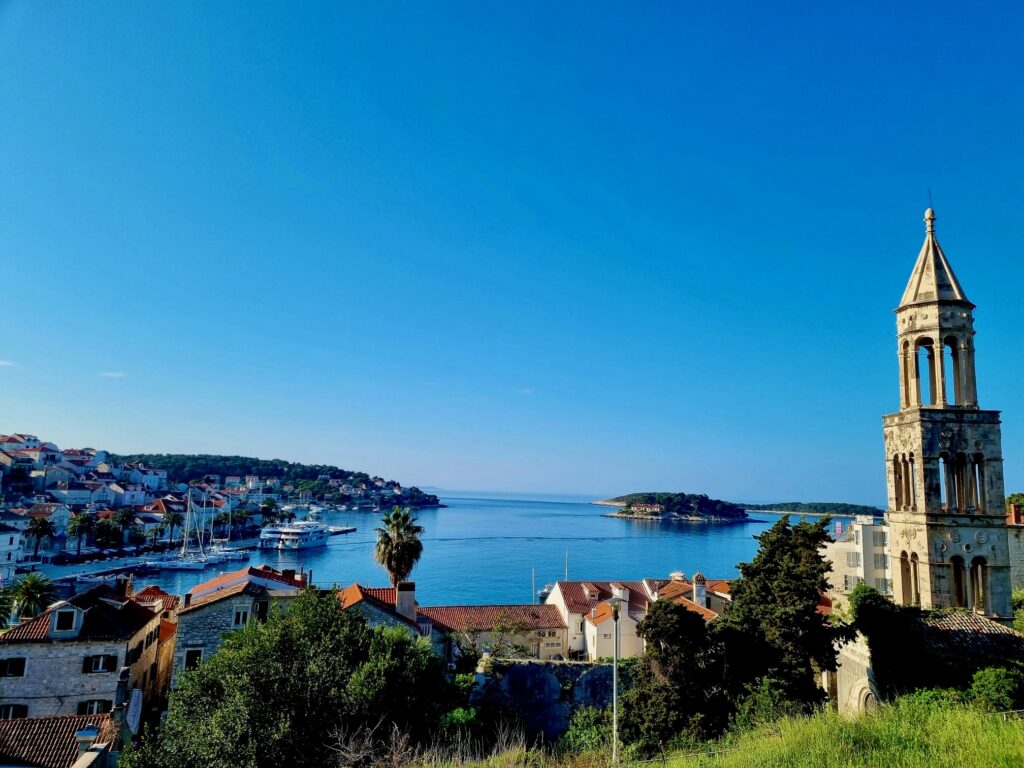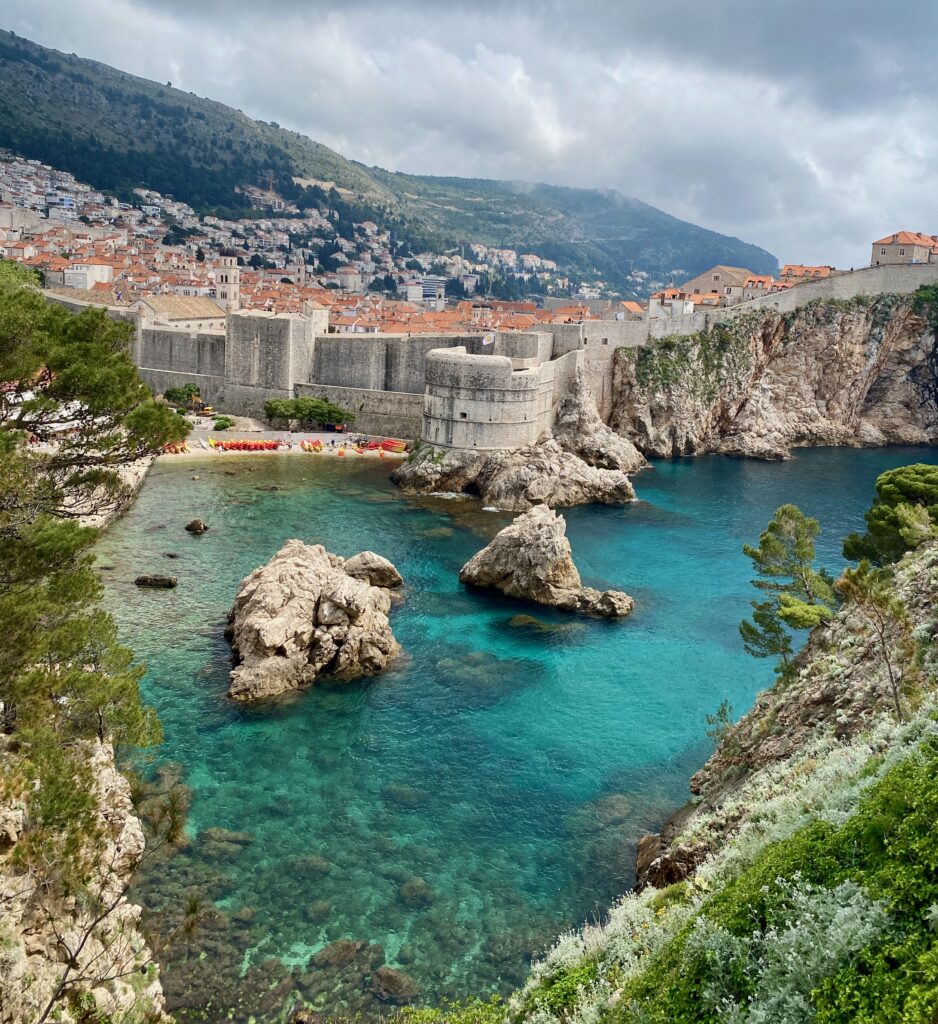After leaving the island of Aero, we drove south from Denmark to Hamburg in early August, the last stop on our extended summer itinerary. The second largest city in Germany after Berlin, Hamburg developed as a free trade and tax-free status city for centuries. The name has nothing to do with hamburgers: original words come from ‘hamm’ (mound) and ‘burg’ (castle/fortress), and the traditional food is actually fish, particularly salted herring. Much of the city was destroyed in a 1842 fire (like many European cities). Later it was heavily bombed in July 1943 by the Allies, so much of what you see is restored.


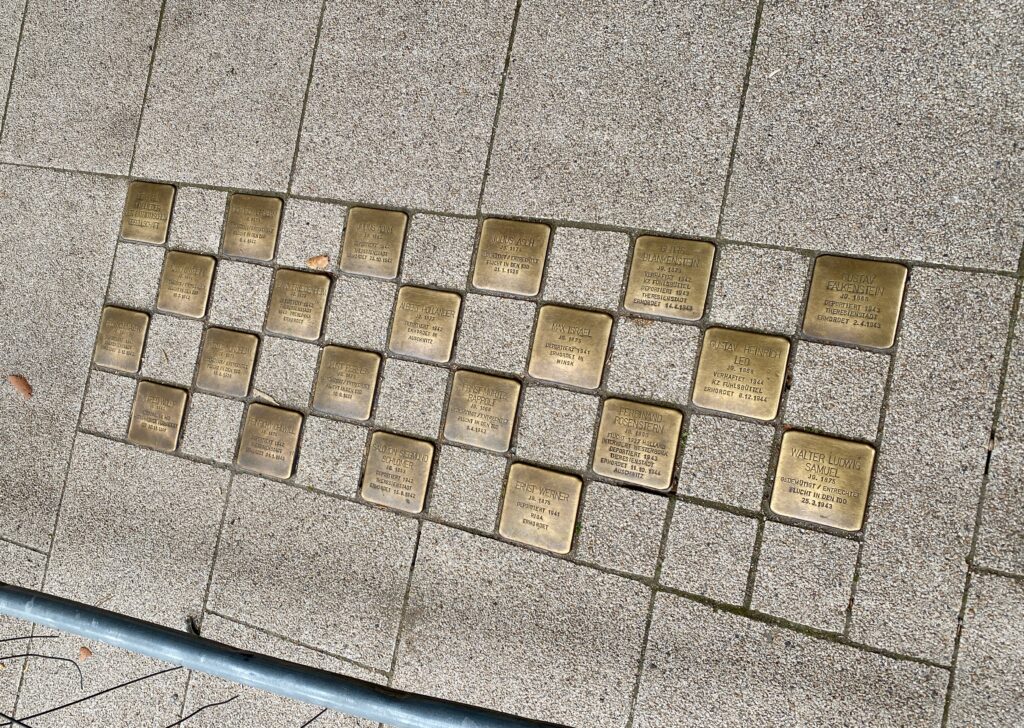


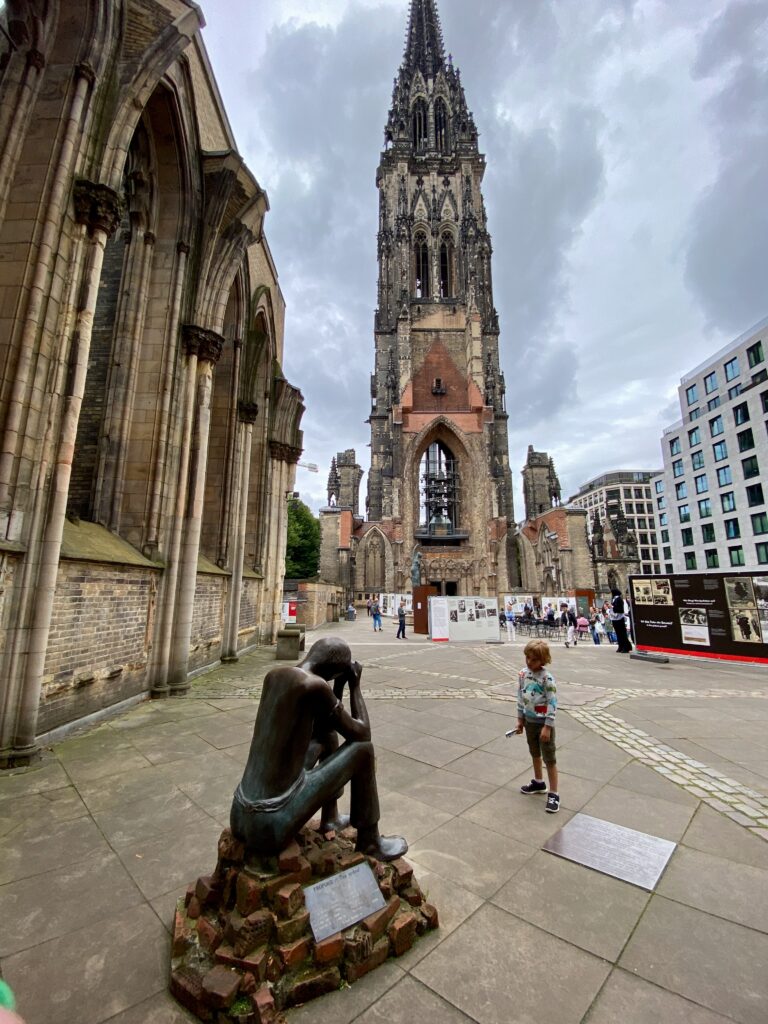
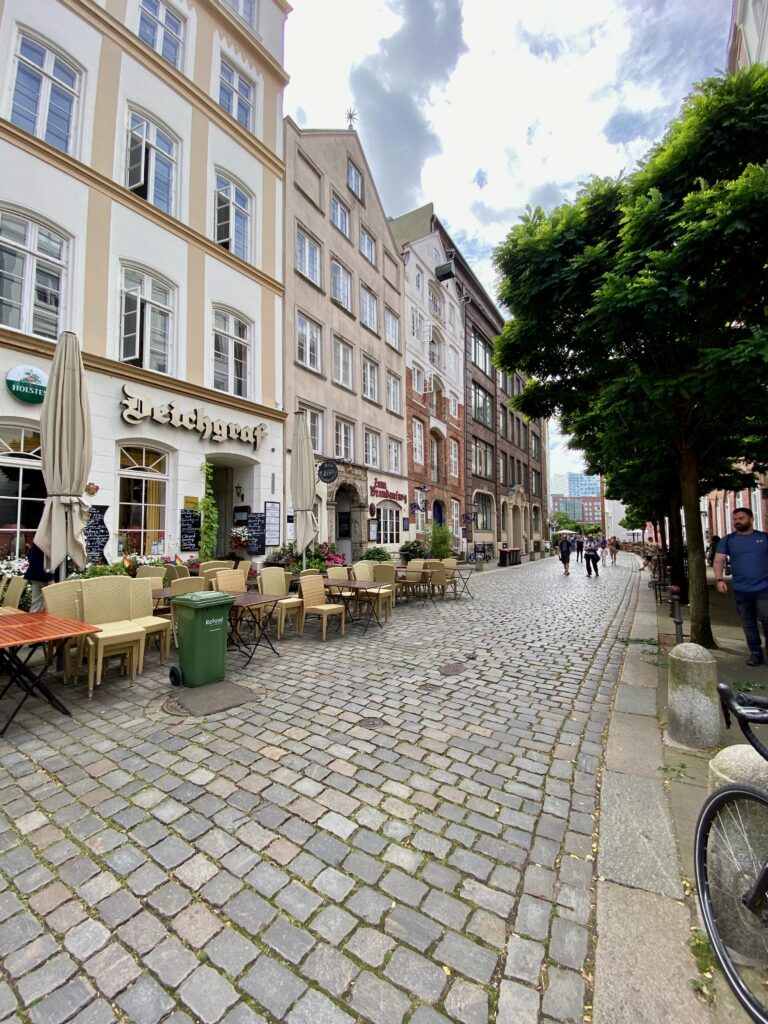

Some notable parts of the week:
• an illuminating city walking tour, visiting the Rathaus (city hall), old town hall (symbolism of guilds, trades, and crafts); “stumbling stones” as memorials for victims of the Nazis deported to concentration camps; the Contor (accounting) houses; the 12th century St. Nikolas Church, the tallest building in the world at that time, and destroyed in the 1943 bombing and massive firestorm except for the steeple; Hamburg played a major role in the Nazi war machine and industry. The St. Nikolas’ Church footprint and complex is now a memorial to victims of war and persecution.
• harbor boat ride – Hamburg remains a significant port city still with a gritty vibe in parts
• Though less pedestrianized than other cities we’ve visited this trip, there are intriguing pockets and walking along the harbor is nice. The city has excellent public transit but also a lot of traffic; driving/parking within the city is to be avoided.
• the re-developed Warehouse City and Harbor City, with the Elbe Philharmonic building (completed in 2017) as the crown jewel
• Miniatur Wunderland – world’s largest miniature railway and miniatures museum – a must-see for all ages!

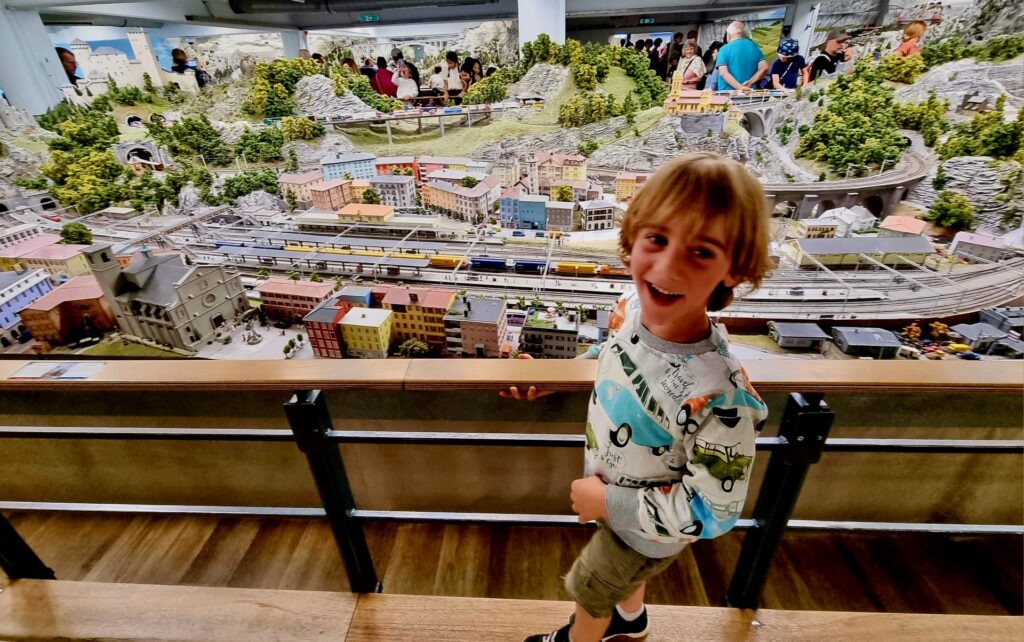
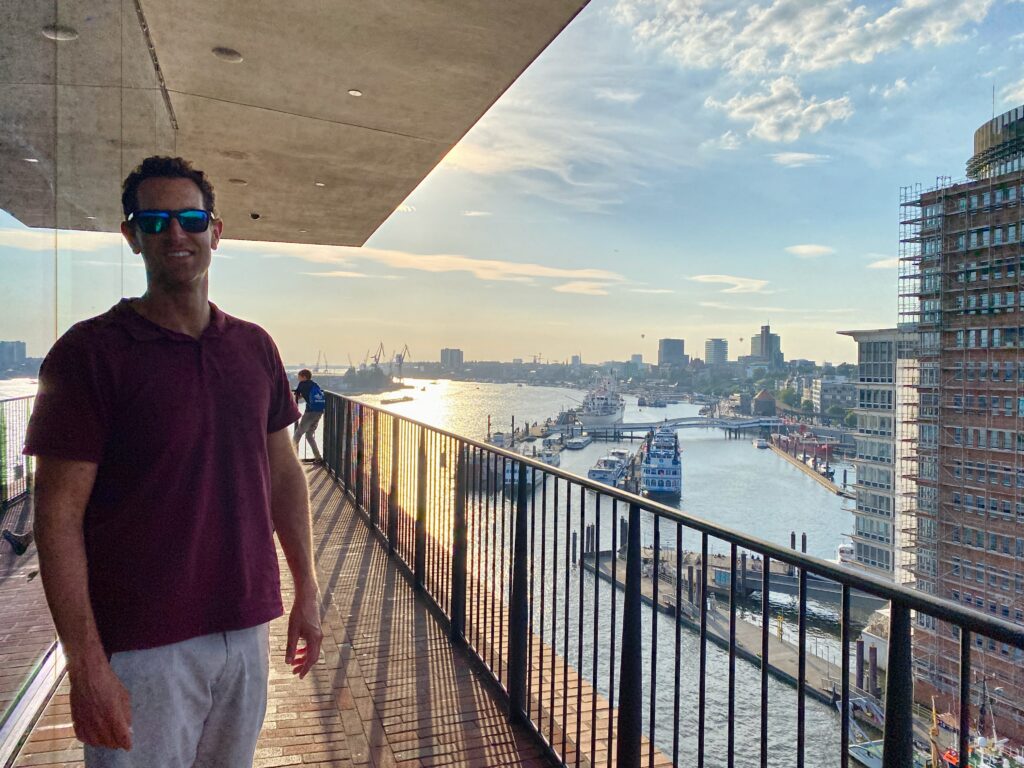

When we asked our city tour guide for his top daytrip for “charming medieval town” he recommended Luneberg, a 45-minute drive southeast. It did not disappoint: known for its salt works and in the Hanseatic League, Luneberg oozes charm and is an enjoyable escape from bustling Hamburg.

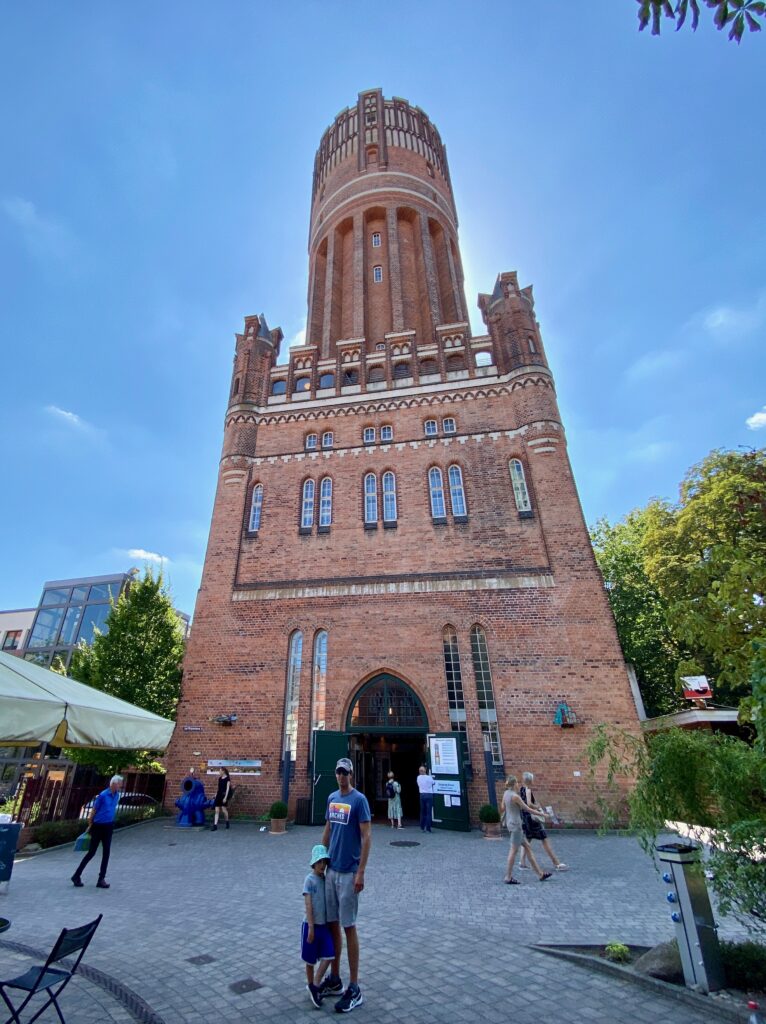

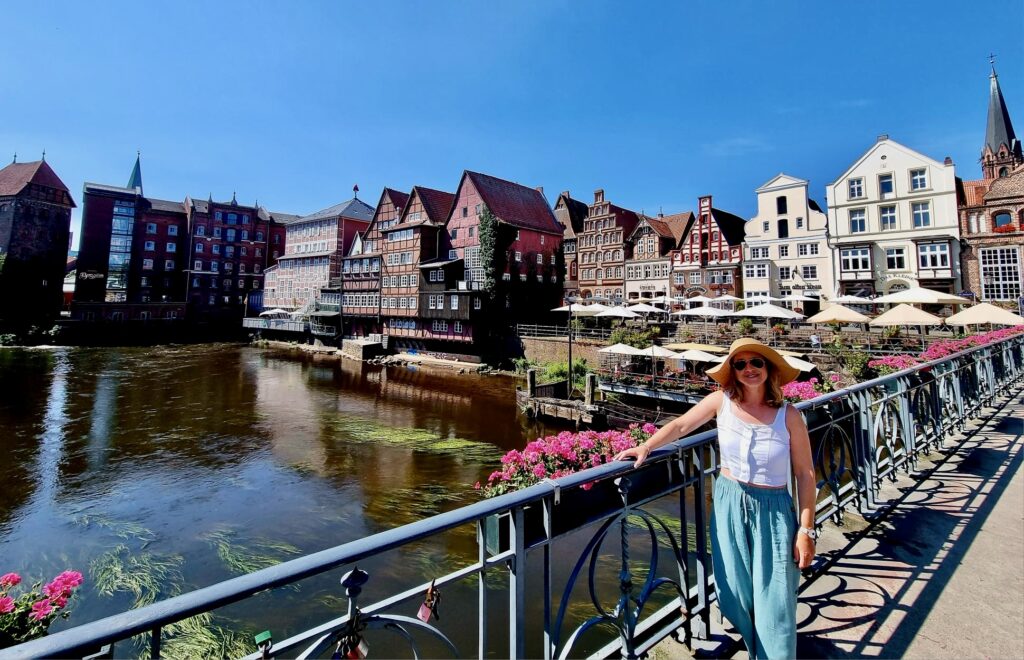

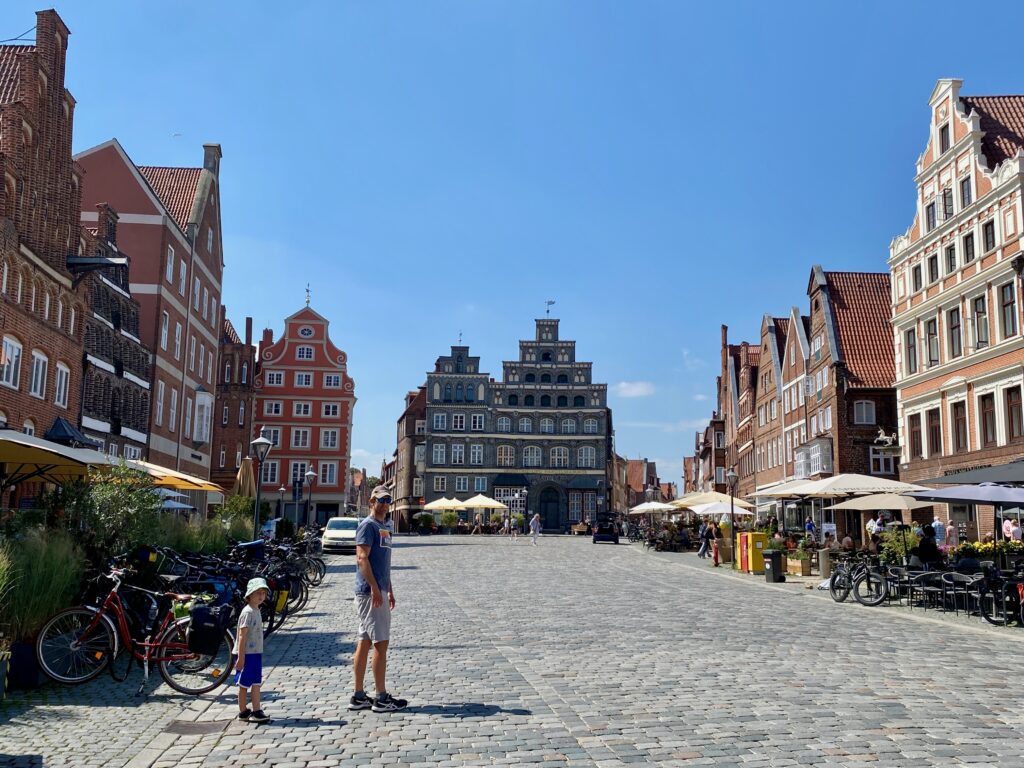
That wrapped up seven weeks on the road in Europe through six countries, and our third summer of extended, slow travel. The biggest takeaways: you can always go slower with kids; mix cities and outdoor nature time; meeting up with friends with kids around the same age makes it even more memorable; and taking the time to vet and secure a few great babysitters along the way pays off.

